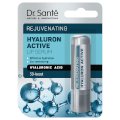 You have probably heard about skincare products with squalene or squalane. But do you know what exactly both of these substances are and how they differ from each other? Today, let us tell you about the cosmetic benefits of squalene and squalane, as well as about the difference between these two similar compounds.
You have probably heard about skincare products with squalene or squalane. But do you know what exactly both of these substances are and how they differ from each other? Today, let us tell you about the cosmetic benefits of squalene and squalane, as well as about the difference between these two similar compounds.
We all know that our skin is naturally protected by a special lipid barrier, which prevents moisture loss and the aggressive impact of various environmental factors. The lipid layer of the skin consists of fatty acids, ceramides, triglycerides, phospholipids, cholesterol and its esters, and squalene. Squalene is a hydrocarbon and triterpene, which, in combination with triglycerides and fatty acids, helps to hydrate the skin, produces an antioxidant effect, and keeps the skin healthy and youthful.
Sadly, over time, your body starts to produce less squalene due to natural ageing and the effects of various external factors. This is when skincare products with squalene come to the rescue; they help to replenish your skin’s squalene levels and provide protection against dehydration and the environment. But where does squalene used in cosmetics come from?
The best known source of squalene is shark liver oil (in fact, the world “squalene” is derived from the Latin word Squalus, which is the name of a genus of dogfish sharks). For a long time, squalene derived from shark liver oil was the primary type of squalene used in cosmetics, which made skincare products with this ingredient quite expensive.
In recent years, manufacturers have mostly switched from squalene sourced from shark liver oil to its plant-based varieties in order to reduce the cost of their products, as well as to protect sharks. Common vegetable sources of squalene include amaranth seed, olives, sugar cane, rice bran, and wheat germ. Plant-based squalene has the same properties as animal squalene, but, unlike animal squalene, it is cruelty-free and vegan-friendly.
The composition of cosmetic squalene is very close to the composition of squalene produced by your skin, so it is very well tolerated by the skin and does not cause irritation, inflammation, blackheads and other skin problems. It is suitable for any skin type and for almost any age. However, squalene does have a serious drawback: it quickly oxidises on contact with air and loses its useful properties.
This is why many cosmetic products contain squalane instead of squalene. Squalane is a hydrogenated form of squalene that is not subject to auto-oxidation. Its stability, coupled with lower production cost, have made squalane a popular component in moisturising skin care products.
Cosmetics with squalane are just as effective as their counterparts with squalene, but their shelf life after opening is much longer. In addition, squalane also retains its useful properties longer than squalene when applied to the skin. But what exactly does it do?
As a cosmetic ingredient, squalane performs several important skincare tasks due to its moisturising and emollient properties. For example, it softens the skin, helps to retain moisture, speeds up the healing of damaged skin, prevents premature wrinkles, soothes sensitive skin, and produces an antioxidant and even mild antibacterial effect. Squalane can be found in a wide range of skincare products, including, but not limited to, various moisturisers, serums, face masks and body lotions.
In our online shop Organic Store, you will find natural and organic products with plant-based squalene and squalane produced by trustworthy manufacturers. We offer affordable prices, secure and convenient payment methods, and international delivery to most parts of the world to make your online shopping experience as comfortable as possible.
Products with Squalene and Squalane in Our Store
Dr. Sante Hyaluron Active Rejuvenating Lip Serum, 4 g |
